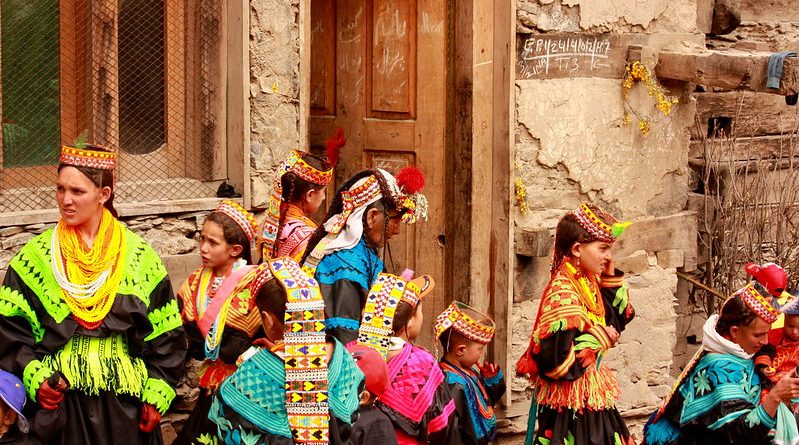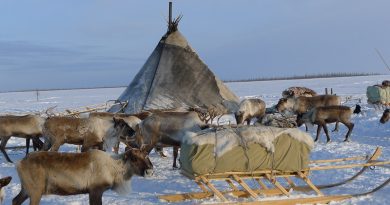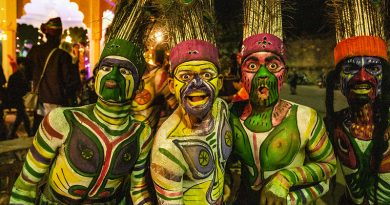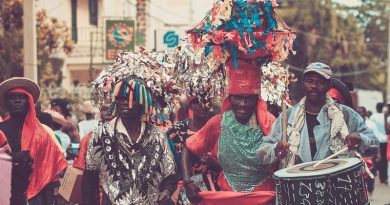Kalash Festival of Choimus
Festival Essentials
Where: Kalash Valleys, Chitral, North-West Frontier Province, Pakistan
When: Mid December
Happenings: Dancing, food, chanting and prayers to the Balomain spirit
Remember to Bring: Your own goat for the ritual slaughter ceremony
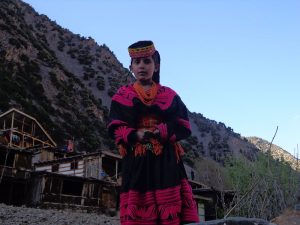
Who are the Kalash?
The Kalash Valleys of Rumbur, Bunboret and Birir are within Chitral in the North-West Frontier Province, near Nuristan in Afghanistan. The people here are some of the only non-muslims for hundreds of miles. The Kalash people are a little wary of strangers, but likely to welcome a foreigner more than the curious tours of townie Pakistani groups.
The 3000 remaining Kalasha of the valleys live in unique houses made of local stone and wood which are stacked on top of one another against the hills so the roof of the lower house is the veranda of the upper. They make their living with staple crops like lentils and wheat and goat herding. Life is very traditional and, like in many in this part of the world, the division between men and their women is great. Family life, cattle herding and harvesting form their main livelihood with the occasional distraction of a festival or two. Women move into a Bashleni house during birthing and also when they are menstruating. Many aspects of the society are both communal and segregated and, typically, marriages are by arrangement.

Origins and History of Kafiristan
They believe they are originally from Tsaim, although no one yet knows where that is. It is more likely they are descendants from Indo-Aryans from the 2000 BC, they claim to be direct descendants of Alexander the Great from 400 BC. The locals derrogatively call them the black kafirs and the Chitral locals pushed the tribes further and further into the hills where they have now settled and their numbers rapidly dwindled.
Their region of Kafiristan was divided by the British in 1893 and those who where in Afghanistan were mainly slaughtered or forced to convert to Islam by Afghan’s Amir. The remaining Kalash are the last remnants of the pre-Islamic culture of Kafiristan, what muslims called ‘land of the unbelievers’.
The Oppression of the Kalash
The Kafir culture conflicted with Islam with its’ love of ornate wood carvings, wine and livestock and violent attempts to convert the region took place during the 19th century. The Kalash survived the bloody slaughter as Chitral was a region governed by the British who offered some protection.
Nowadays, the official Pakistan government line is of ethnic tolerance, but still the Kalash people are subjected to constant racism and taunts. Their traditional way of life is also under threat from tourism and the industrial development of the valley by wealthy Pakistan corporations whose rubbish and sewage are polluting the Kalash water supply. They live on subsistence farming and food shortages and limited grazing forest land as a result of de-forestation is a constant problem.
Whether enforced or not, the constant pressure to assimilate with muslim and Pakistan culture is a pressure constantly on the Kalash people. In poor economic times, many Kalash are forced to convert to Islam and leave the tribe to go in search of work. Muslim tourists are known to abuse and leer at the Kalash women who do not cover their heads and some women have been forced into prostitution. Now, many families are divided by religion with less full blooded Kalash remaining, although the numbers of the tribe are thought to be on the increase.
Beliefs and Celebrations
The Kalash are infamous for their festivals; these folks know how to let their hair down in style. There is much dancing where the elders chant legends with drum accompaniment and the women dance round outside. Locally brewed mulberry wine is drunk in copious quantities, although the festival dates are rarely set in stone as they depend on the harvest so if you’re running short of time you may be disappointed.
The festival of Joshi is for spring harvest, and lasts 4 – 6 days in Mid May and the Uchao festival on 20th August celebrates the pre-harvest with cheese, corn and wine. The Choimus in mid December for the winter solace is the most impressive, lasting 10 days. Non-Muslims foreigners are usually allowed to participate, but you must buy your own goat for the sacrifice!
The Kalash worship the many gods of Kafiristan like Balomain, the heroic demi-god of the Kalash whom the Choimus Festival celebrates. Balomain’s spirit is said to pass through the valley counting the people of the Kalash and collecting their prayers returning them to Tsiam, the mythical land of the Kalash.
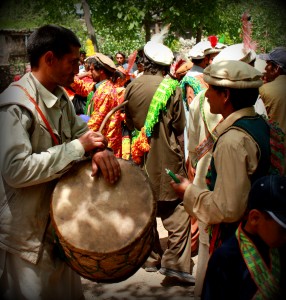
What Happens at the Choimus Festival?
Much dancing in giant circles around bonfires and chanting in mesmerising repetitions – with just a drum beat accompanying the voices. The girls wear intricate costumes with dresses made of cowery shells, coins and beads with intricate hair braiding and headwear. The heavy headdress weighing several pounds is presented to the girl by her uncle. Other jewellery includes necklaces made from apricot kernels, a traditional gift during Choimus. Women often paint their faces with ink (replacing earlier customs of facial tattooing). Single woman are expected to find themselves a husband during these festivals.
Just before the main festival, seasonal foods are offered to the ancestral spirits and a kotik, light for the ancestors, is lit. After this ritual the food, considered impure, is offered to the elderly women to be eaten.
During the festival, purity is paramount and celibacy is enforced throughout the days of the event so all the people will be in pure mind when Balomain visit the valley. All the people must be cleansed in a ritual bathing the week before the festival begins. During the men’s purification ceremony, they must not sit down at all during the day and at night the blood of a sacrificed goat is sprinkled on their faces. Special bread is eaten cooked away from the main village which is prepared by men only during the purification ceremony. Other bread called jaou or choimus breadis prepared for the festival which is stuffed with crushed walnuts and goats cheese.
Special dance halls exist for the purpose of dancing at festivals. They are decorated with ornate carved wooden pillars and goat-like figurines. The music and dance is a performance of set songs: the Cha or clapping song is the simplest song with a lilting dance, sung by the elders, with an energetic round dance and the women cry like goats. The drajahilak songs are long and slow, sometimes one song can last up to 2 hours and it is a kind of solo and chorus using improvisation and variation techniques. The Dushak combines the styles of Cha and Drajahilak, presenting both traditional songs and new compositions.The dancing involves side stepping, fast and rhythmical.
During the festival prayers, a procession is made to a high plateau outside of the village in Balanguru where the long night of dancing begins. The festivals continues for many more day moving on to different locations within the valleys.

Where to see the Choimus Festival
Bumburante is the largest and most accessible place for a tourist to view the festivities, and there are several Muslim run hotels in the town. The PTDC hotel is best avoid as the Kalash people believe it is responsible for toxic pollution of the valley.
More Information
A great trove of information on Kalash festivals, dress, customs and travel.
An excellent resource dedicated to : ‘Protect, conserve and promote the Kalasha tangible and intangible heritage’
By Susi O’Neill

